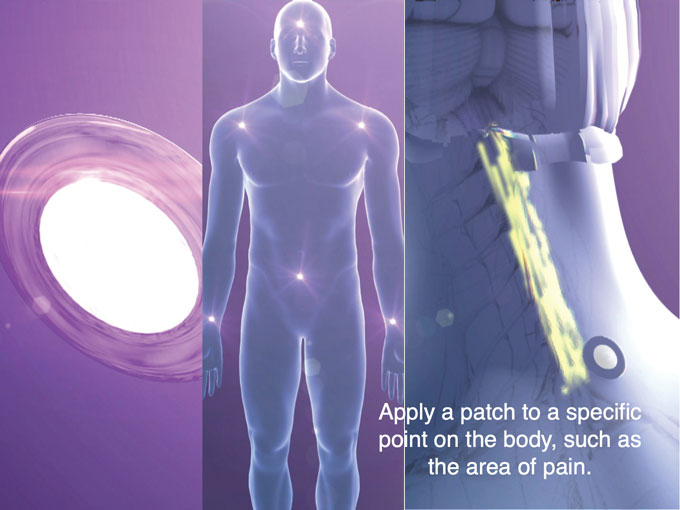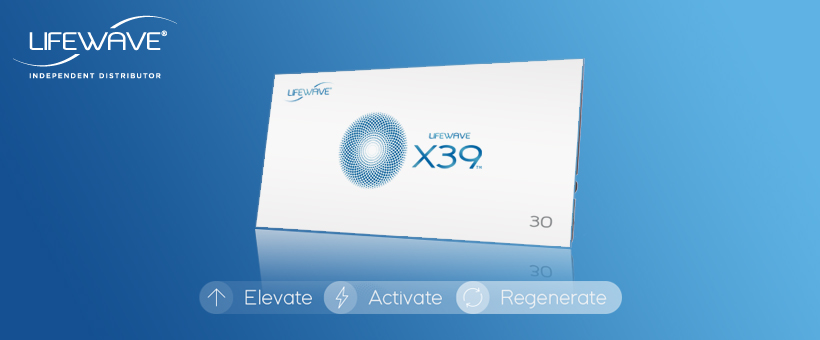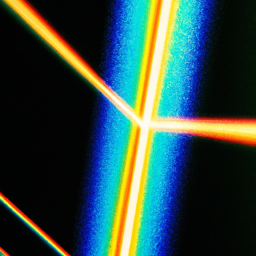Are you a pregnant woman wondering if phototherapy is safe for you and your baby? This article explores the safety of phototherapy during pregnancy, providing you with the information you need to make an informed decision. Phototherapy is a commonly used treatment for various skin conditions, but its potential effects on pregnant women have been a topic of concern. By examining the available research and expert opinions, we aim to shed light on this topic and offer guidance for expecting mothers.

What is Phototherapy?
Definition
Phototherapy is a medical treatment that uses light to manage certain conditions and promote healing. It involves exposing the skin to specific wavelengths of light, which can have various therapeutic effects. This treatment has been widely used for different purposes and has shown promising results in many cases.
Purpose
The main purpose of phototherapy is to treat certain medical conditions, such as skin disorders, jaundice, and mood disorders. It utilizes different types of light, including ultraviolet (UV) light and visible light, to target specific issues and stimulate the body’s natural healing processes. Phototherapy can be administered in different ways, such as through light boxes, lasers, or specialized devices, depending on the specific condition being treated.
Types of Phototherapy
There are several types of phototherapy that are commonly used in medical settings:
-
Ultraviolet B (UVB) Therapy: This form of phototherapy uses a specific range of UVB light to treat skin conditions like psoriasis, eczema, and vitiligo. It can help reduce inflammation, soothe itchy skin, and promote the growth of new skin cells.
-
Narrowband UVB: This is a more targeted version of UVB therapy that uses a narrower range of wavelengths. It has been found to be more effective and have fewer side effects than broad-spectrum UVB therapy.
-
UVA Phototherapy: UVA light is used for the treatment of certain skin conditions like atopic dermatitis and mycosis fungoides, a type of lymphoma. This type of treatment is often combined with a medication called psoralen, which increases the skin’s sensitivity to UVA light.
-
Blue Light Therapy: Blue light therapy is commonly used to treat acne, as it has antimicrobial properties that can reduce the bacteria responsible for breakouts. It can also help regulate sebum production and reduce inflammation.
-
Red Light Therapy: Red light therapy is used for skin rejuvenation and wound healing. It can stimulate collagen production, improve blood circulation, and reduce the appearance of fine lines and wrinkles.
Risks and Benefits of Phototherapy
Benefits of Phototherapy
Phototherapy offers a range of benefits for pregnant women and others who may require this treatment. Some of the key benefits include:
-
Effective treatment: Phototherapy has been proven to be an effective treatment for many conditions, including skin disorders and neonatal jaundice. It can provide relief from symptoms and improve overall well-being.
-
Non-invasive: Unlike some medical treatments, phototherapy is non-invasive and does not require any surgical procedures. It involves exposing the skin to light, which is generally well-tolerated and safe when used appropriately.
-
Minimal side effects: When used correctly and under medical supervision, phototherapy has minimal side effects. Most common side effects, such as temporary redness or dryness, are mild and temporary.
-
Versatile treatment option: Phototherapy can be customized to suit individual needs and conditions. Different types of light and devices are available, allowing healthcare providers to tailor the treatment to each person’s specific requirements.
Risks and Side Effects of Phototherapy
While phototherapy is generally considered safe, it does carry some risks and potential side effects. It is important to be aware of these risks and discuss them with your healthcare provider. Some potential risks and side effects include:
-
Skin damage: Exposure to light can cause skin damage if not properly controlled or monitored. This can result in sunburns, blistering, or increased sensitivity to sunlight.
-
Eye damage: Direct exposure to certain types of light used in phototherapy, such as UVA or UVB, can be harmful to the eyes. Protective goggles or eye shields should be worn during treatment to minimize the risk of eye damage.
-
Heat-related issues: Some phototherapy devices emit heat, which can cause discomfort or overheating, especially in pregnant women who are more susceptible to temperature changes. It is essential to ensure proper ventilation and temperature control during treatment.
-
Allergic reactions: In rare cases, individuals may have an allergic reaction to the medication or substances used in conjunction with phototherapy, such as psoralen. It is crucial to inform your healthcare provider of any known allergies before undergoing treatment.
Considerations for Pregnant Women
Pregnant women need to take additional precautions when considering phototherapy. While there may be potential benefits, certain factors should be taken into account:
-
Gestational age: The stage of pregnancy can influence the safety and effectiveness of phototherapy. It is essential to consult with a healthcare provider who can assess the risks and benefits based on the specific circumstances.
-
Hormonal changes: Pregnancy causes hormonal changes, which can affect the skin’s sensitivity to light. Pregnant women may be more prone to sunburns or hyperpigmentation. Adjustments to the treatment plan may be necessary to ensure safety and efficacy.
-
Potential impact on fetal development: Although research suggests that phototherapy is generally safe during pregnancy, there is still limited data on its long-term effects on fetal development. It is important to discuss any potential risks with your obstetrician or healthcare provider.
Safety Concerns
Effects on Fetal Development
The safety of phototherapy during pregnancy has been a topic of research and debate. While some studies suggest minimal risks, others highlight potential concerns. It is widely believed that the benefits of phototherapy usually outweigh the risks, but caution is still advised, especially in certain situations.
Potential Harmful Effects
There is limited evidence suggesting potential harmful effects of phototherapy on fetal development. Some studies have raised concerns about the possibility of DNA damage, cellular changes, and an increased risk of childhood cancers. However, these findings are inconclusive, and further research is needed to fully understand the long-term effects.
Precautions and Guidelines for Pregnant Women
To ensure the safety of pregnant women considering phototherapy, healthcare providers follow certain precautions and guidelines:
-
Individual assessment: Each pregnant woman’s case should be evaluated individually, considering factors such as the specific skin condition, gestational age, and overall health. Consultation with an obstetrician or dermatologist is essential before starting phototherapy.
-
Safety measures: Protective measures, such as specialized goggles for eye protection and shielding the abdomen, may be recommended during treatment to minimize potential risks.
-
Monitoring and follow-up: Regular monitoring of both the pregnant woman and the fetus is crucial throughout the treatment process. This may include frequent check-ups, ultrasounds, and blood tests to ensure the well-being of both mother and baby.
-
Weighing risks and benefits: The potential benefits of phototherapy should be carefully weighed against the potential risks, taking into consideration the severity of the condition and the availability of alternative treatment options.
Medical Conditions and Restrictions
Pregnancy Complications
Certain pregnancy complications may limit the use of phototherapy. Conditions such as gestational diabetes, preeclampsia, or placenta previa may require alternative treatment approaches or further evaluation of the risks and benefits associated with phototherapy.
Gestational Age
Gestational age plays a crucial role in determining the appropriateness of phototherapy for pregnant women. The stage of pregnancy can affect the potential risks and benefits. It is important to consult with a healthcare provider to determine if phototherapy is a suitable option based on the specific gestational age.
Unresolved Medical Issues
Pre-existing or unresolved medical conditions, such as autoimmune disorders, liver disease, or certain types of cancer, can impact the safety and effectiveness of phototherapy during pregnancy. Comprehensive medical evaluation is essential to ensure that the treatment plan is appropriate given these factors.

Research and Studies
Available Data and Studies
Numerous studies have investigated the safety and efficacy of phototherapy in pregnant women. While the available data is somewhat limited, overall, the results suggest that phototherapy can be safe and effective when appropriately administered and monitored. However, more research is still needed to obtain a comprehensive understanding of the effects on maternal and fetal health.
Limitations and Conflicting Findings
The existing research on phototherapy during pregnancy has various limitations and conflicting findings. Factors such as small sample sizes, differences in study design, and variations in treatment protocols make it challenging to draw definitive conclusions. This highlights the need for further research and larger-scale studies to provide more reliable data.
Expert Opinions
Experts in the field generally agree that phototherapy can be considered safe for pregnant women when necessary precautions are taken. However, they emphasize the importance of individualized assessments, close monitoring, and adherence to guidelines to minimize potential risks. Consulting with healthcare providers who specialize in obstetrics and dermatology can provide valuable insights and guidance.
Alternative Treatments
Non-Pharmacological Options
In some cases, non-pharmacological options may be considered as alternatives to phototherapy during pregnancy. These can include lifestyle modifications, such as avoiding triggers for certain skin conditions, managing stress levels, and maintaining a healthy diet. Physical therapies, such as cold compresses or oatmeal baths, may also help alleviate symptoms.
Alternative Therapies
Certain alternative therapies, such as acupuncture, aromatherapy, or herbal remedies, may be explored as alternatives to phototherapy. However, it is essential to consult with healthcare providers who have expertise in both obstetrics and these alternative therapies to ensure safety and efficacy.
Consulting with Healthcare Providers
When considering alternative treatments, it is crucial to seek guidance from healthcare providers who have specialized knowledge and experience in dealing with pregnant women. They can provide reliable information, assess the suitability of each option, and help determine the best course of treatment based on the specific needs and circumstances.

Phototherapy Devices
Commonly Used Devices
Different types of phototherapy devices are available, each designed for specific purposes and conditions. Examples of commonly used devices include:
-
Light boxes: These devices emit light of specific wavelengths to treat conditions like seasonal affective disorder (SAD) or sleep disorders. They are often used for mood disorders that can affect pregnant women.
-
Laser devices: Lasers are used for various dermatological conditions, including acne, hyperpigmentation, or birthmarks. The laser emits a specific wavelength of light that targets the affected area without affecting the surrounding tissues.
-
Phototherapy beds or booths: These larger devices are suitable for treating conditions like psoriasis, and they expose the entire body to UV radiation. They are equipped with timers and safety features to control the dosage of light.
Safety Features
Phototherapy devices usually incorporate various safety features to ensure the well-being of pregnant women and other patients. These features can include:
-
Timer controls: Devices are equipped with timers to control the duration of exposure to light. This prevents excessive exposure, reducing the risk of adverse effects.
-
Dosage control: Certain devices allow healthcare providers to adjust the dosage of light based on individual needs and tolerance levels. This helps ensure that each patient receives an appropriate and safe treatment.
-
Temperature regulation: Some devices may generate heat during treatment. Proper temperature regulation mechanisms, such as cooling systems or ventilation, are employed to prevent overheating and discomfort.
Quality Assurance
When selecting a phototherapy device or a facility that offers this treatment, it is essential to consider factors such as accreditation, certifications, and adherence to quality standards. Choosing a reputable center that follows established guidelines and regularly undergoes inspections can provide assurance of the quality and safety of the equipment and procedures.
Patient Testimonials
Experiences of Pregnant Women
Patient testimonials can provide valuable insights into the firsthand experiences of pregnant women who have undergone phototherapy. It is important to note that individual experiences may vary, and what works well for one person may not work for another. Reading or listening to testimonials can help generate awareness and provide a general sense of potential outcomes.
Positive Testimonials
Many pregnant women have reported positive experiences with phototherapy. They have noted improvements in their skin conditions, relief from symptoms such as itchiness or inflammation, and overall improved well-being. These positive testimonials highlight the potential benefits of phototherapy when used appropriately.
Negative Testimonials
While the majority of pregnant women who undergo phototherapy have positive experiences, there are also negative testimonials to consider. Some women have reported minimal or no improvement in their condition, skin irritation, or discomfort during treatment. These negative testimonials emphasize the importance of individualized assessments and careful consideration of potential risks.
Medical Professionals’ Recommendations
Guidelines from Obstetricians and Gynecologists
Obstetricians and gynecologists play a crucial role in guiding pregnant women considering phototherapy. The American College of Obstetricians and Gynecologists (ACOG) recommends that phototherapy can be considered safe during pregnancy when used appropriately. They advise healthcare providers to assess each case individually, consider potential risks, and closely monitor the patient throughout the treatment process.
Recommendations from Dermatologists
Dermatologists who specialize in phototherapy provide valuable insights into the safety and effectiveness of this treatment option during pregnancy. They emphasize the need for careful evaluation of each case, close monitoring, and collaboration with obstetricians to ensure the well-being of both the pregnant woman and the fetus. Dermatologists can also recommend specific treatment protocols tailored to the unique needs of pregnant women.
Other Healthcare Providers’ Perspective
Other healthcare providers, such as general practitioners or therapists, may have varying perspectives on the use of phototherapy during pregnancy. It is important to consult with healthcare providers who are knowledgeable about the specific condition being treated and who have experience working with pregnant women. Their expertise can help provide a comprehensive understanding of the potential benefits and risks associated with phototherapy.
Conclusion
In conclusion, phototherapy can be a valuable treatment option for pregnant women when used appropriately and under medical supervision. It offers various benefits, including effective management of skin conditions and neonatal jaundice, with minimal side effects when compared to other treatment options. Despite some potential risks and limitations, when careful considerations and precautions are taken, phototherapy can be a safe and effective approach to improving both maternal and fetal health. It is crucial to consult with healthcare providers who have expertise in obstetrics and dermatology to assess each case individually and determine the best course of action based on the specific needs and circumstances.





